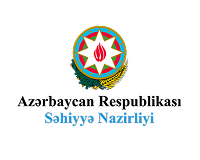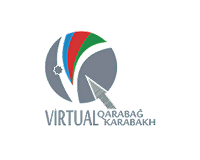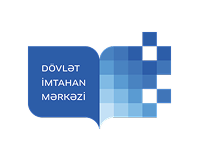SILLABUS I confirm
Azerbaijan Medical University Head of Department of
«Children's Diseases» subject «Children's Diseases II»
WORKER TRAINING PROGRAM prof. N.S.Sultanova
Signature ____________
___._________________.2023
SILLABUS
(educational-methodical program for organization of student's free work)
Faculty: General medicine
Department: «Children's disease II»
Education term of subject: ІX
Academic year: 2022/2023
Course: V
Instructors: Teaching staff of the department
Teaching load: practic lessons 50 hours + lecture 10 hours
Teaching method of subject: practic lessons (4h) + lecture (2h)
Subject code: İPF-B39
Subject type: Mandatory
Subject credits: 4
Instruction languages of subject: azerbaijan, russian, english.
Contacts: +994 51 599 06 24
E/mail: department_cdn2@amu.edu.az
PREREQUISITE:
Subjects that must be taught in advance: «Anatomy», «Physiology», «Pathological Anatomy», «Pathological Physiology», «Biochemistry», «Pharmacology», «Propaedeutics of Pediatrics».
COREQUISITE
There is no need to teach other subjects simultaneously with the teaching of this subject.
COURSE OBJECTIVES:
In the IV-V courses the main purpose of teaching children's illnesses is to acquire knowledge about the etiology, pathogenesis of frequently encountered diseases in children. Improving and strengthening the examination habits in pediatric patients is the goal of teaching the basic principles of clinical thinking, clinical diagnosis, obtaining differential diagnostic skills, and the treatment and prophylaxis of frequently encountered diseases.
At the 6th course, students are conducting a clinical training course in clinical departments and outpatient clinics as well as participate in multidisciplinary studies of the head of the department, professors and docents.
Clinical analysis of the lectures on the subject of the problem and the clinical analysis of practical subjects is accompanied by a detailed examination of the results of modern paraclinic examinations (instrumental, laboratory-biochemical, etc.).
COURSE RESULTS:
During IV-V courses, students acquire professional habit of examining patients, study diagnostics, differential diagnostic tactics, urgent emergency care, and medical documentation. In the VI course, syndrome and detailed differential diagnosis are studied. Upon completion of this course, students should be aware of the anatomo-physiological characteristics of different aged children and the measures they encounter. To achieve these, students will gain the most up-to-date medical equipment, the ability to accurately diagnose diagnosis and correct diagnosis by studying their primary diagnostic and prognostic markers, and correctly diagnosing the diagnosis.
THEMATIC PLAN OF LECTURES FOR STUDENTS OF THE FACULTY OF GENERAL MEDICINE ON THE SUBJECT
«CHILDREN'S DISEASES»
V COURSE (IX SEMESTER)
|
№ |
Topics |
Hourse |
|
1. |
Diseases of the connective system. Acute rheumatic fever, pathogenesis and clinical features, diagnostic features. Principles of treatment and prevention. Scleroderma, systemic lupus erythematosus, dermatomyositis, periarteritisnodosa. Pathogenesis and clinical features, diagnostic criteria. Principles of treatment and prevention. |
2 |
|
2. |
Diseases of the respiratory system in children. Bronchitis in older children. Features of the clinical course of acute and protracted pneumonia. Etiology, clinic, treatmentandprevention. |
2 |
|
3. |
Helminthoses in children. Ascariasis. Enterobiosis. Trichocephalosis. Clinic, diagnosis and treatment. Giardiosis (lambliosis). Clinical and asymptomatic forms. Principles of treatment. |
2 |
|
4. |
Diseases of the gastrointestinal tract in children. Gastritis, gastroduodenitis. Peptic ulcer and 12 duodenal ulcer. Hepatitis and diseases of the biliary tract. Cholangiocholecystitis. Clinical and laboratory diagnostics. Moderndiagnosticmethods. Principlesoftreatmentandprevention. |
2 |
|
5. |
Syndrome of impaired intestinal absorption. Celiacdisease, enteropathy. |
2 |
|
Summury |
10 |
|
THEMATIC PLAN OF PRACTICAL LESSONS FOR STUDENTS OF THE FACULTY OF GENERAL MEDICINE ON THE SUBJECT
«CHILDREN'S DISEASES»
V COURSE (IX SEMESTER)
|
№ |
Topics |
Hourse |
|
1. |
Rheumatic diseases in children. Acute rheumatic fever. Etiology and pathogenesis. Clinic and instrumental diagnostics. Differential diagnosis. Staged principles of treatment. Preventive methods. Juvenile rheumatoid arthritis. Diagnostic principles. Principles of treatment and prevention. |
4 |
|
2. |
Diseases of the connective system in children. Systemic lupus erythematosus. Dermatomyositis. Scleroderma. Periarteritisnodosa. Features of the clinic manifestation. Diagnostic criteria. Treatment and preventive measures. |
4 |
|
3. |
Diseases of the respiratory system in children. Features of bronchitis, pneumonia and pleurisy in older children. Etiopathogenesis. Clinic, modern methods of instrumental and laboratory diagnostics. Treatment principles and prevention. |
4 |
|
4. |
Features of pneumonia and pleurisy in older children. Etiopathogenesis. Modern methods of clinical, instrumental and laboratory diagnostics. Principles of treatment. Prevention. |
4 |
|
5. |
Diseases of the digestive system in children. Functional disorders of the gastrointestinal tract. Chronicconstipation. Treatment. Diettherapy. |
4 |
|
6. |
Gastroduodenitis. Peptic ulcer and 12 duodenal ulcer. Clinical and laboratory diagnostics. Treatment plan. Anti-recurrentactivities. |
4 |
|
7. |
Chronic hepatitis in children. Etiopathogenesis, clinical forms, diagnosis, treatment principles. Cirrhosisoftheliver in children. Differentialdiagnosis. |
4 |
|
8. |
Diseases of the biliary tract in children. Dyskinesia. Cholecystitis.Cholangiocholecystitis. Clinical and laboratory diagnostics. Treatmentplan. |
4 |
|
9. |
Pancreatitis in children. Clinical and laboratory diagnostics. Treatment. |
4 |
|
10. |
Ulcerative colitis in children, Crohn's disease. Clinical and laboratory diagnostics. Treatment. |
4 |
|
11. |
Helminthiasis in children. Ascariasis. Enterobiasis. Trichocephalosis. Clinic, diagnosis and treatment. Giardiosis (giardiasis). Clinicalandasymptomaticforms. Treatmentprinciples. |
4 |
|
12. |
Syndrome of impaired intestinal absorption. Celiacdisease, enteropathy. |
4 |
|
13. |
Hereditary lung diseases in children (Kartagener syndrome, alpha-antitrypsin deficiency), cystic fibrosis. Etiopathogenesis, clinicalpicture, diagnosis, principlesof treatment. |
2 |
|
Summury |
50 |
|
FREE WORK:
During the semester each student is given the task 10 topics to work freely. Performance of each work assignment is 1 point.
The work should be in a written form, in the form of word file, size 4-5 pages (font-12).
Plagiarism is unacceptable because every free work is a collection of individual ideas.
TOPICS FOR INDEPENDENT WORK FOR V YEAR STUDENTS FACULTY OF GENERAL MEDICINE ON THE SUBJECT OF «CHILDREN'S DISEASES »
|
№ |
Topics |
|
1 |
Bronchitis in older children. Classification, etiology, clinic, differential diagnosis. Treatment and prevention. |
|
2 |
Acute and lingering pneumonia in children. Features of the course. Treatment and prevention. |
|
3 |
Pleurisy. Classification. Clinic, diagnosis and treatment. |
|
5 |
Hereditary diseases of lung. Cystic fibrosis. Ciliary dyskinesia. Features of the course. Differential diagnosis, treatment. |
|
6 |
Acute rheumatic fever in children. Etiopatagenesis, features of the course, diagnostic criteria, treatment and principles of prevention. |
|
7 |
Modern view on the etiopathogenesis of diffuse connective tissue diseases in children. Systemic lupus erythematosus. Features of the course in children, diagnosis, treatment. The prognosis of the disease. |
|
8 |
Dermatomyositis. Features of the course in children, diagnosis, treatment. The prognosis of the disease. |
|
9 |
Scleroderma. Periarteritis nodosa. Pathogenesis, clinical course. Diagnostics and treatment. |
|
10 |
Functional diseases of the gastrointestinal tract. Rome IV revision criteria. Clinic, diagnosis and treatment. |
|
11 |
Gastroduodenitis. Modern classification. Features of the course in children, differential diagnosis, treatment and prevention. |
|
12 |
Peptic ulcer and 12 duodenal ulcer. Clinic, modern diagnostic methods, treatment regimens and prevention. |
|
13 |
Dyskinesia of the biliary tract. Cholecystitis. Cholangiocholecystitis. Etiology, pathogenesis, clinical picture, treatment. |
|
14 |
Chronic hepatitis in children. Etiopathogenesis, clinical picture, differential diagnosis, treatment and prevention. |
|
15 |
Cirrhosis of the liver in children. Etiopathogenesis, clinical picture, treatment and prevention. |
|
16 |
Pancreatitis in children. Pathogenesis, clinical and laboratory diagnostics, treatment. |
|
17 |
Malabsorption syndrome. Pathogenesis, clinical picture. Differential diagnosis. Treatment. |
|
18 |
Inflammatory bowel disease in children. Nonspecific ulcerative colitis. Crohn's disease. Clinic, differential diagnosis, treatment. |
|
19 |
Helminthiasis in children. Ascariasis. Enterobiasis. Trichocephalosis. Clinic, diagnosis and treatment. |
|
20 |
Giardiasis in children. Clinic, diagnosis and treatment. |
LIST OF PRACTICAL SKILLS FOR V YEAR STUDENTS OF THE FACULTY OF GENERAL MEDICINE ON THE SUBJECT OF «CHILDREN'S DISEASES »
|
№ |
Topics |
|
1 |
Examination of a sick child: palpation, percussion and auscultation. |
|
2 |
İmpatient management. Rules for writing a medical history. |
|
2 |
Interpretation of the results of analysis: - Simple blood analysis; - Biochemical blood tests (rheumatic tests, etc.); - Simple analysis of feces; - Gregerson's reaction; - Methods for the determination of Helicobacter pylori; - Immunological tests; - Bacteriological analysis. |
|
3 |
Interpretation of the results of instrumental examination methods:
|
|
4 |
Taking a swab from the nose and throat for bacteriological analysis. |
|
5 |
Assessment of the work of external respiration. Peak flowmetry. Spirometry. |
|
6 |
Providing emergency care for:
|
|
7 |
Prescription rules. |
ESTIMATION
100 points, necessary in subject, will be divided as follows:
Also:
10 points - visit of occupations
10 points - free work
During a semester (12 days) to be carried out 3 colloquiums. If the student doesn't participate in a colloquium, then 0 points are written .Examination is held on the basis of tests. Each question - 1 point.
NOTE:
The points gained prior to examination and at examination are summarized and the total point is estimated according to the following scheme:
A – «excelent » - 91-100
B – «very good» - 81-90
C – «good» - 71-80
D – «satisfactory» - 61-70
E - «passable» - 51-60
F- «unsatisfactory» - less 51
SILLABUS- THE WORKING TRAINING PROGRAM
The contents of the program of the bachelor cover planning of educational process, a form and methods of its application, volume of educational loading, duration of grade levels (semester), types of training (a lecture, practice, laboratory, etc.), volume of separate objects, requirements imposed to educational programs for specialties.
Planning and the organization of processes of training is carried out on the basis of working programs for objects and curricula (the approximate worker and the individual). The form and structure of these documents is defined by a higher educational institution.
Subject programs for specialties are prepared by higher educational institutions, according to requirements of higher educational programs and are confirmed by the Ministry of Education of the Azerbaijan Republic. On the basis of subject programs working programs (syllabuses) are developed and is confirmed from higher educational institutions
The working training program - prepares on the basis of a subject and represents the document displaying the description of a subject, the purpose, the summary, duration of occupations, hours of consultations, information on the teacher, requirements of the teacher, evaluation criteria, the intermediate table of estimation, the list of the used literature.
REFERENCE
- A.A. Əyyubova, H.H.Qabulov, N.H.Sultanova. Uşaq xəstəlikləri /Dərslik/ Bakı 2018, 558 səh.
- N.Ə.Tağıyev. Neonatologiya /Dərslik/, Bakı 2008, 535 səh.
- S.Ş.Həsənov. Yenidoğulan uşaqların reanimasiyası və intensiv terapiyası /Dərs vəsaiti/. Bakı 2009, 212 s.
- S.M.Qasımova, N.C.Quliyev, Ü.Ə.Əliyeva, Uşaq xəstəlikləri, /Dərslik/, Bakı 2016, 660 səhifə.
- Pediatriya. İ.İ. İsayev, S.Q. Xanməmmədova, R.R Məmmədova, N.Q. Hüseynov. Bakı 2017,482səh.
- Uşaq xəstəliklərinin propedevtikası. İ.İ. İsayev. Bakı 2011, 571 səh.
- S.Z.Qarayeva. Uşaq xəstəlikləri /Dərs vəsaiti/ Bakı, 2014, 186 səh.
- N.A. Hüseynova, N.C.Quliyev və b. Uşaq qastroenterologiyası /Dərs vəsaiti/ 2013, 391 səh.
- N.A. Hüseynova, N.C. Quliyev və b. Pediatriyada pəhriz terapiyası /Dərs vəsaiti/ 2014, 276 səh.
- А.А. Баранов.Детскиеболезни /Учебник/2-е изд, испр. и доп.-М.: ГЭОТАР-Медиа, 2012.-1008 с.
- Н.П. Шабалов.Детскиеболезнив 2-хтомах /Учебник/, 6-е изд. перераб. и доп. –СПб.:Питер 2012 (Учебник для вузов).
- Н.П. Шабалов. Неонaтология. В 2-т. Учеб.пособие, 5-е изд. испр. и доп. –М.: МЕДпресс-информ, 2009.
- P. Veliyev.Pediatrik Diseases /The Textbook/ Baku, 2012, 259 page.
- Детские болезни. Н.П.Шабалов в 2-х томах. Санкт-Петербург, 2006.
TECHNICAL SUPPLIES
Puloxymeter, spirometer, neurosonograph, nebulaser


 English
English Русский
Русский




